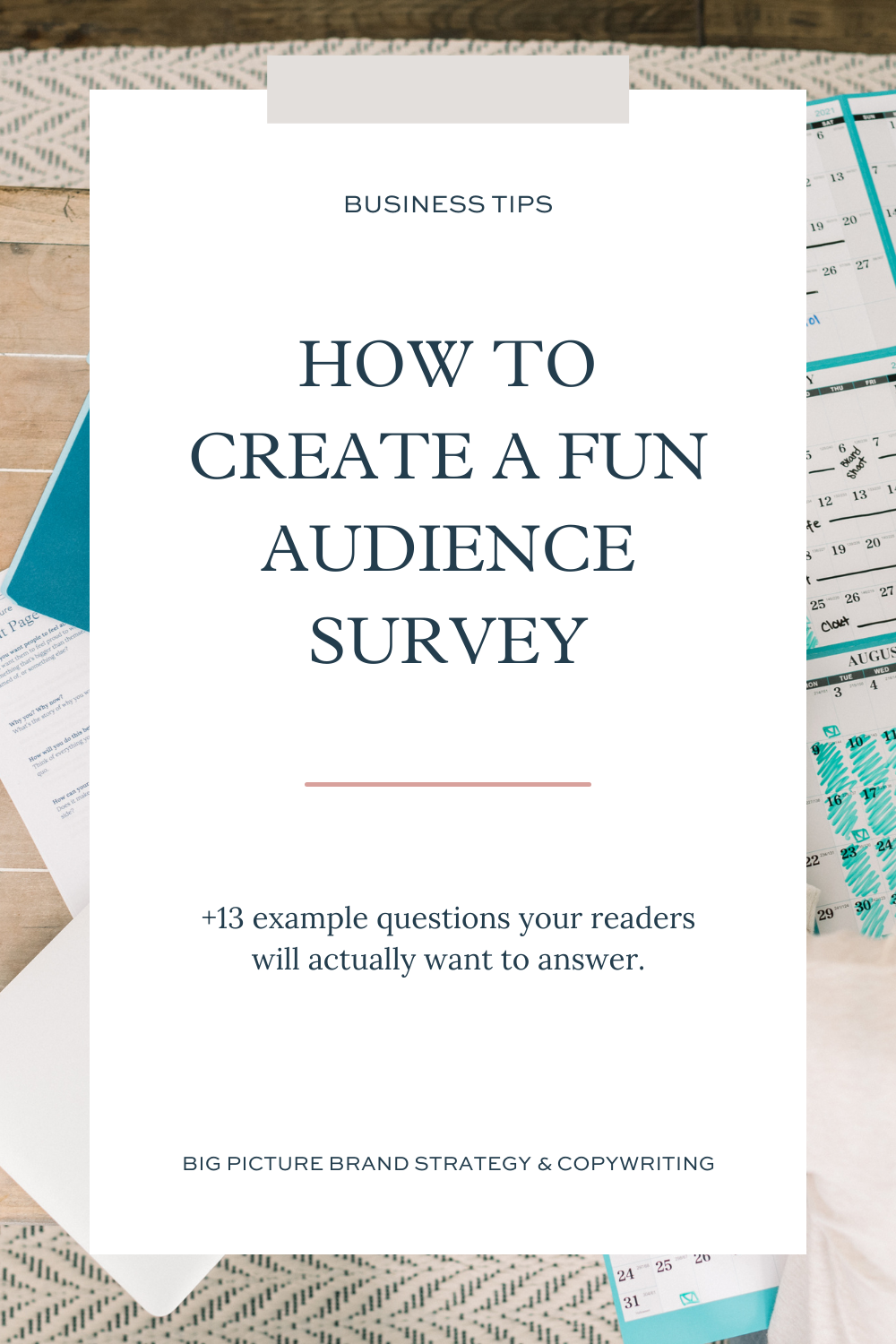I love working through deep, contemplative quandaries like what my target audience struggles with most, which topics to focus my content on, and if anyone actually wants to see another course or template aimed at [X] problem…
But you know what else I love? When someone just gives me the answers I’m looking for.
Enter your target audience survey.
A target audience survey is your opportunity to hear directly from your readers. You can make assumptions all day long but there’s no better way to confirm or deny what you think they want and need than by going directly to the source and asking them.
In order to create an engaging audience survey your readers actually want to take, it helps to make it fun. But fun shouldn’t come at the expense of asking strategic questions. It’s a balancing act.

How to create an engaging target audience survey
Let’s start with the basics. A good audience survey:
-
Uses a clean and simple interface
-
I love Wisp.io but Google forms is A+ in my book too.
-
Add your brand colors or a banner image to give the page some warmth.
-
-
Takes a conversational tone almost as if you are asking them the questions directly over a cup of coffee, rather than across a conference table.
-
Includes a couple of warm-up questions or peppers in a few softballs to keep things light, while giving your readers motivational hits of dopamine. (Have you ever been to trivia night and felt unbridled excitement when the host asks a question you know the answer to off the top of your head? It’s like that.)
-
Includes a progress bar if more than 10 questions long or notes when the reader is at the halfway point within the question text itself.
-
Consider letting people know how many questions or how much time they’re in for from the get-go to help manage their expectations.
-
-
[Optional] Offers a small gift thanking your audience for their time.
-
Ex: discount code or freebie
-
How to make your audience survey fun!
You can create a survey that’s fun to take by reframing basic questions in a unique way. For example, take the question, “How old are you?”
Q: Which musical artist was hitting the charts around the time you were born?
-
NSYNC bringing falsetto notes and hair gel back (the aughts)
-
Janet Jackson doing the most with Rhythm Nation (the 90s)
-
Bruce Springsteen on a one-man PR campaign for the good ‘ol USofA (the 80s)
-
Bee Gees redefining Saturday nights (the 70s)
-
Monkees always dropping by to say hey, hey (the 60s)
-
Harry Belafonte’s daylight came and we hope he made it home (the 50s)
What’s fun about this is you can tailor your references to jive with a certain generation’s viewpoint or summon nostalgia. The question itself is fun, but so are the answers.
Here’s another example:
Let’s say you’re trying to figure out if you should target your content for beginners or seasoned experts. You might ask:
Q: What’s your level of expertise?
-
Bright-eyed and bushy-tailed beginner with plans. Hello glass ceiling, I am coming for you.
-
You’re sittin’ pretty with some solid years of experience. It’s only a matter of time until the CEO placard sits on our desk.
-
In the words of Beyonce, you run this mutha’. You’re the head honcho or pretty dang close.
The question was straightforward, but the answers are infused with an energetic tone of voice. Your reader should walk away from this question feeling good and ready to seize the day.
What are the best questions to include in your target audience survey?
This can vary depending on your goal. Are you trying to decide which offer, feature, course or product to create next? Are you trying to home in on what makes your readers tick so you can write website copy that converts like, whoa? Determine the decision you would like to make based on your survey results first. In order to make your decision one way or another, what information do you need to know about your audience?
In general, you’ll likely consider:
-
Industry or niche
-
Level of expertise
-
Position or role
-
Primary motivators
-
External problem
-
Internal problem
-
Philosophical problem
-
Sources of conflict
-
Interests
-
Priorities
-
Where do they get their information?
How to get people to take your survey
Unless you have a truly altruistic audience, you may need to provide some sort of incentive to motivate your readers to take the survey. Discounts, giveaways, gift cards. Whatever the incentive, make sure it’s equivalent to the amount of time and effort your audience will need to put into their answers. Are you going to ask them to fill in some answers and tell you personal experiences or whiz through five multiple-choice questions?
You might also consider how much competition there is for your audience’s time. Offering a valuable incentive sends the message that you know your reader has the whole world screaming for their attention so you will compensate accordingly.
Where are the best places to put your survey?
Here are a few ideas…
-
Within your Email Welcome Sequence
-
Link to it on your website announcement bar
-
Website pop-up
-
Website embed
-
Link your survey at the bottom of your email signature
-
Survey your email newsletter list
-
Survey your client list (if appropriate)
Ready to create your own target audience survey?
I’ve got 13 strategic survey questions your readers will have fun answering PLUS explanations for how to use your readers’ answers to create or refine your products/services/content and fuel your copywriting.
PIN TO SAVE FOR LATER

